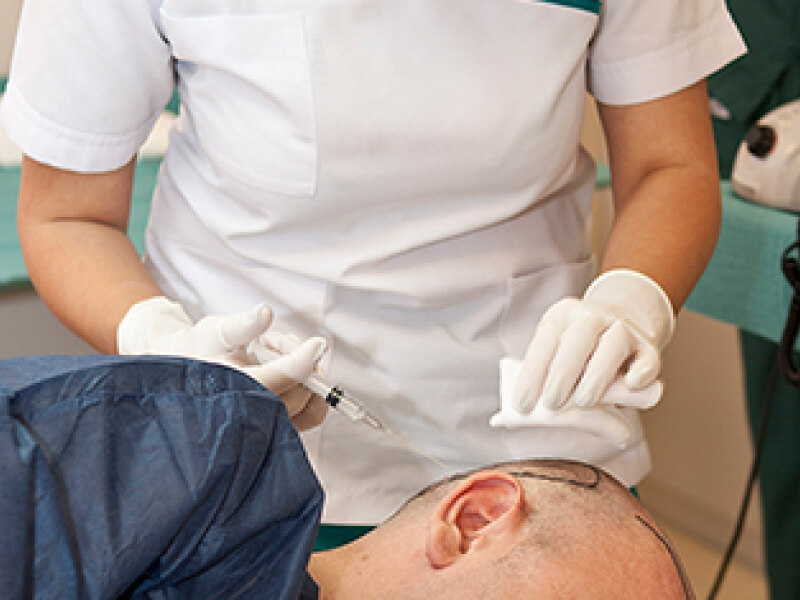When I first started researching hair transplants in Turkey, I was overwhelmed by the number of terms thrown around — FUE, DHI, Sapphire FUE. Every clinic seemed to claim theirs was “the most advanced” or “the latest technique.” But as I discovered during my own hair transplant journey with Clinicana Hair Transplant & Esthetic Surgeries, these methods aren’t entirely separate procedures — they’re variations of how grafts are extracted and implanted. Understanding their differences can help you choose the technique that’s right for your goals, budget, and hair type.
If you’re currently trying to make sense of these acronyms, this article will break it down clearly — with real-world experience and facts backed by respected sources like the Mayo Clinic, ISHRS, and peer-reviewed PubMed studies.
What FUE, DHI and Sapphire Actually Mean
At their core, all three techniques share the same purpose — to relocate healthy hair follicles (called grafts) from the donor area (usually the back of the head) to thinning or balding areas. The difference lies in how those grafts are extracted and implanted.
| Technique | Full Name | Main Tool/Approach | Implantation Method | Typical Use Case |
|---|---|---|---|---|
| FUE | Follicular Unit Extraction | Micro-punch | Grafts are extracted one by one, then implanted into pre-made channels | Most common, affordable, proven |
| DHI | Direct Hair Implantation | Choi Implanter Pen | Grafts are implanted directly without pre-made incisions | Great for dense packing or smaller areas |
| Sapphire FUE | Sapphire-tipped FUE | Sapphire blade | Uses sapphire blades for finer, V-shaped channels | Faster healing, natural density |
All three are minimally invasive and offer excellent results when done by a skilled team. As the International Society of Hair Restoration Surgery notes, the surgeon’s technique and experience matter more than the specific label a clinic uses.
When I went to Clinicana in Istanbul, I was given a choice between FUE and DHI, with the option of Sapphire blades for either. My surgeon explained each in detail before recommending FUE for my case — a decision that made perfect sense once I saw the results.
My Experience With FUE (and Why I Chose It)
I had my FUE procedure at Clinicana in January 2025. The whole process took around seven hours, with short breaks in between. The surgeon carefully designed my hairline, and the team extracted each graft using micro-punches before implanting them into tiny channels across the front of my scalp.
What stood out to me most was how precise the process felt. It wasn’t rushed — every graft was placed with attention to angle and direction, which is crucial for natural results. According to a PubMed study on FUE, the average graft survival rate is around 85%, with over 90% of patients satisfied after 12 months. My own experience matched that data closely — by month 7, I already had dense, natural-looking growth.
Some of the reasons I chose FUE included:
- It’s one of the most widely used and tested methods.
- The recovery is quick (I was out sightseeing in Istanbul three days later).
- It’s excellent value for money — my standard package at Clinicana cost €2,850 and included the hotel, transfers, surgery, and aftercare.
While FUE worked perfectly for me, I also learned about DHI, which takes a slightly different approach that might appeal to some patients.

DHI: A More Precise, Pen-Based Approach
DHI (Direct Hair Implantation) uses a special tool called the Choi Implanter Pen, which allows surgeons to extract and implant grafts almost simultaneously. This eliminates the need to create channels first — each graft is placed directly into the scalp.
Clinics like Clinicana often recommend DHI for:
- Smaller procedures or touch-ups
- Creating dense, detailed hairlines
- Patients who prefer not to shave the entire head
Because the grafts spend less time outside the scalp, DHI can improve survival rates slightly — especially when performed by experienced hands. However, it requires more skill and time, so it’s generally more expensive (often €2,800–€3,500 in Turkey).
When I asked my surgeon about it, he said that DHI is fantastic for precise implantation in limited areas but that for my larger transplant of over 3,000 grafts, FUE would deliver better coverage. That honest advice was one of the reasons I trusted Clinicana — they didn’t push the “premium” method just for profit.
Still, DHI remains a cutting-edge choice for patients who value precision over scale. The ISHRS confirms it’s particularly useful for high-density transplants and hairline refinement.
But what about Sapphire FUE — the technique that sounds like it belongs in a luxury jewelry store?
Sapphire FUE: When Tools Make the Difference
Contrary to what many people think, Sapphire FUE isn’t a completely new method. It’s still based on the standard FUE process — but instead of steel blades, surgeons use sapphire-tipped instruments to create recipient channels.
That might sound like a small detail, but it makes a noticeable difference:
- The sapphire blade’s V-shape allows finer, more precise incisions.
- Less tissue trauma means reduced swelling and faster healing.
- Smaller channels allow for denser graft placement and a smoother finish.
Clinicana used Sapphire blades during my procedure, and I did notice how quickly my scalp recovered. Redness was minimal, and by Day 7, most of the scabbing had already cleared. The European Academy of Dermatology and Venereology notes that the use of sharper, smoother tools in transplantation helps minimize tissue irritation and improve healing outcomes.
This approach blends innovation with practicality — the same FUE process, upgraded by better instruments. And it leads naturally into the question most people ask next: Which method is best?
Comparing FUE, DHI, and Sapphire FUE
Here’s a quick overview comparing the three methods as they’re typically performed in Turkey’s top clinics, including Clinicana:
| Feature | FUE | DHI | Sapphire FUE |
|---|---|---|---|
| Incision Method | Steel punch + manual channeling | Direct implantation (Choi pen) | Sapphire blade channeling |
| Scarring | Minimal | Minimal | Least visible |
| Healing Time | 7–10 days | 5–7 days | 5–7 days |
| Cost Range (Turkey) | €2,000–€3,000 | €2,800–€3,500 | €2,500–€3,200 |
| Best For | Larger coverage areas | Precise hairlines | Fast healing, natural density |
| Available at Clinicana | ✅ Yes | ✅ Yes | ✅ Yes |
Each option has its strengths. The key is matching the right technique to your specific type of hair loss — something an experienced surgeon should assess before surgery.
That’s why I always tell people: don’t get caught up in marketing buzzwords. A skilled clinic can deliver amazing results with any of these methods.
Which Technique Is Best for You?
There’s no single answer — the “best” method depends on factors such as:
- The size of your balding area
- Your donor hair density
- Your budget
- Your lifestyle and recovery preferences
During my consultation, my doctor explained that:
- FUE is ideal for larger areas needing more grafts.
- DHI suits smaller, detailed work or unshaven procedures.
- Sapphire FUE enhances the results of either by improving precision and healing.
As the British Association of Dermatologists highlights, the success of a hair transplant is determined far more by the clinic’s experience and post-operative care than by the technique alone.
Clearing Up Common Myths
When I was researching, I came across plenty of misconceptions:
- “Sapphire FUE is a new technique.” False — it’s an upgrade in blade material, not the overall process.
- “DHI always gives better results.” Not true — it depends on your surgeon’s skill and the area being treated.
- “FUE leaves visible scars.” Only if performed by unlicensed or inexperienced clinics.
The World Health Organization advises international patients to choose clinics regulated by their country’s health ministry and operating in proper medical facilities. Clinicana met those standards — it’s based inside Acıbadem Taksim Hospital and licensed by the Turkish Ministry of Health.
Knowing this gave me the peace of mind to proceed, and looking back, it was one of the best decisions I’ve ever made.
My Verdict: FUE with Sapphire — The Perfect Balance
For me, FUE with Sapphire blades was the perfect middle ground — cost-effective, reliable, and enhanced by modern tools. It gave me a dense, natural hairline and a smooth recovery, and I felt supported every step of the way thanks to Clinicana’s English-speaking coordinators and professional team.
If you’re deciding between FUE, DHI, or Sapphire, I’d suggest having an open discussion with your surgeon about your expectations, donor area, and long-term goals. Don’t pick based purely on what sounds “new” — focus on what’s right for you.
If you’d like to see what my results look like month by month, or learn from the questions I wish I’d asked sooner, you can get my free guide, “8 Things I Wish I Knew Before Booking My Hair Transplant in Turkey”. It’s packed with honest insights and practical tips from someone who’s been through it all.



 Continue with Google
Continue with Google